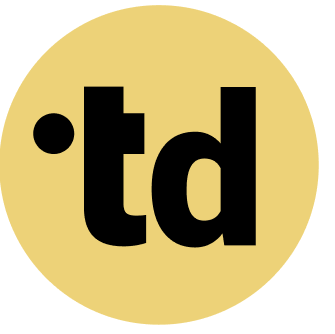Key Takeaways
Using AI to augment human teams can boost efficiency by up to 53 percent when roles are clearly defined for both people and AI agents.
Team Architects are crucial for success; they must intentionally design hybrid team (humans and AI agents) structures and manage the cultural shift towards human-AI collaboration.
Addressing employee overload is critical, as 77 percent of workers experience burnout, which AI can help alleviate by automating repetitive tasks.
Today's teams face a constant battle against overload. Information chaos is rampant, with 41 percent of employees spending an hour a day just searching for files. This inefficiency fuels burnout and costs the EU economy over €100 billion yearly. But a new hero has entered the fight: artificial intelligence. By strategically using AI to augment human team capabilities, organizations can transform their workflows. This isn't about replacing people; it's about empowering them. With clear roles and smart AI agent integration, teams can cut through the noise, achieve up to 53 percent more efficiency, and finally get back to the work that matters.
Practical Framework for Team Architects
As a Team Architect, you can apply these principles to your organization:
- Map Current State: Document existing roles and responsibilities using a tool like teamdecoder.
- Identify Gaps: Where are roles unclear? Where do humans and AI agents overlap?
- Define Clear Boundaries: Specify which tasks are handled by humans vs. AI agents.
- Create Accountability: Assign clear decision rights for each role.
- Iterate and Improve: Continuously refine based on team feedback.
Confronting the Team Overload Epidemic
The modern workplace is reaching a breaking point. A staggering 73 percent of European IT professionals report burnout from rising workloads and skills shortages. This isn't just a feeling; it has a massive financial impact, contributing to widespread employee disengagement that is the lowest in Europe at just a significant portion. The constant flood of information means employees use eleven or more apps daily, a significant jump from just a few years ago. This digital chaos directly harms mental wellbeing for workers. To win this fight, leaders must rethink their entire organizational development strategy. This requires a tool built for clarity in a complex world, as detailed in our guide on building hybrid teams (humans and AI agents). A new approach is needed to restore balance and focus.
Integrating AI to Achieve Peak Team Performance
Artificial intelligence offers a powerful solution to workplace chaos. In Germany, 70 percent of companies expect AI to increase their productivity significantly. They forecast an average productivity jump between 8 and within five years. AI excels at automating the 60 to 70 percent of work activities that are repetitive, freeing up human talent for strategic tasks. McKinsey estimates generative AI could add up to $ in value to the global economy annually. Adopting these tools is the first step, but true success comes from weaving them into the fabric of your team. You can explore integrating AI assistants to see how this works in practice. This strategic integration turns potential into measurable results.
Architect Insight: Designing Your Human-AI Hybrid Team
Team Architects are the key to unlocking hybrid efficiency. Their first job is to define crystal-clear roles, which can make teams more efficient. This isn't just about humans; it's about mapping out the roles of AI in teams, too. A well-structured hybrid team sees a some boost in performance. You can try teamdecoder for free to start mapping these new structures. Our Playful Tip: Think of your AI agent as a new team member who needs a proper onboarding. Here is a simple checklist to get started:
- Define the AI's primary function (e.g., data analysis, scheduling).
- List three to five key tasks the AI will own completely.
- Identify the human roles that will provide oversight and input.
- Establish the communication channel between the AI and the team (e.g., a Slack channel).
- Set one clear Key Performance Indicator (KPI) for the AI's first 90 days.
Deep Dive: Successful AI adoption hinges on a people-centric change management strategy. Organizations must create a culture of experimentation and learning to maximize AI's benefits. This structured approach ensures technology serves the team, not the other way around.
Make Bots and Humans Click Through New Leadership
Effective hybrid teams require a new style of leadership. By 2026, old command-and-control models could see a drop in profitability due to a lack of AI adaptability. Leaders must now focus on transformation and building psychological safety. In fact, European employees worry about job disruption from a lack of AI skills. Good leaders address this by investing in training and transparent communication. Almost half of German employees (a significant portion) already use AI at work, showing they are ready to adapt. Our Playful Tip: Host a 'Bot & Greet' session where the team can experiment with a new AI tool in a low-stakes environment. This builds familiarity and reduces anxiety. For more ideas, see our guide on training for AI. This proactive leadership fosters a culture where humans and AI truly collaborate.
Scaling Team Capacity with AI Agent Integration
AI integration is a powerful engine for scaling your business. The share of German companies using AI more than doubled to some in just one year, driven by the need for efficiency. In the German manufacturing sector, some companies are now using AI to streamline operations. This isn't limited to large corporations; German SMEs now use AI, an increase from the previous year. This rapid adoption shows that scaling with AI is becoming a core business strategy. Our Playful Tip: Start with one well-defined process, like customer support ticketing or sales lead qualification, before expanding. You can learn more about scaling with AI assistants in our dedicated article. This focused approach ensures each step of AI integration adds immediate value.
Measuring the New Metrics of Hybrid Success
To justify AI investments, you must measure what matters. Go beyond traditional outputs and track new metrics for your hybrid team. Start by monitoring task completion times for AI-assisted workflows. A key goal is reducing the one-plus hour per day employees waste searching for information. Also, track employee engagement and satisfaction, as teams with clear roles report higher job satisfaction. Our Playful Tip: Create a simple dashboard with three to five key metrics. Here are some ideas:
- Time-to-Clarity: How long it takes for a new team to define its roles and responsibilities using a tool like teamdecoder.
- Meeting Reduction Rate: The percentage decrease in internal status meetings per week.
- Focused Work Ratio: The increase in time spent on deep work versus administrative tasks.
- Adoption Rate: The percentage of the team actively using the new AI tool weekly.
These new KPIs provide a clear picture of your ROI and help you refine your strategy for measuring team performance. This data-driven approach proves the value of your organizational development efforts.
Your Next Step: From Chaos to Clarity
Building a high-performance hybrid team is a journey from chaos to clarity. It starts with acknowledging the most employees facing burnout and taking decisive action. By using AI to augment human capabilities, you create new team structures that are both resilient and efficient. This transformation is powered by clear roles and responsibilities for every member, bot and human alike. The journey requires a Team Architect mindset, focused on intentional design, not accidental evolution. See our pricing to get started. See our pricing. The final step is empowering your team to embrace this new way of working. Try teamdecoder for free - shape your team and make change feel like play!
More Links
Wikipedia provides a comprehensive overview of Artificial Intelligence.
Plattform Lernende Systeme discusses the topic of work and AI.
Fraunhofer IAO offers insights into successfully shaping human-AI collaboration in companies.
FAQ
What is the first step to augmenting our team with AI?
The first step is to identify a specific, high-impact pain point that AI can solve. Instead of a broad AI strategy, focus on a narrow problem like managing customer support tickets or scheduling meetings. This allows for a quick win and helps the team build confidence in using AI.
How does teamdecoder help build hybrid teams (humans and AI agents)?
teamdecoder is a tool that helps you act as a 'Team Architect.' It provides a platform to visually map out and define roles, responsibilities, and workflows for Many people on your team-including AI agents. This clarity is the foundation for a high-performing hybrid team, reducing confusion and boosting efficiency.
Do we need technical experts to use AI in our team?
Not anymore. While technical experts are needed to build complex AI models, many modern AI tools are designed for non-technical users. The focus should be on training your team how to use these tools effectively and think critically about the outputs, rather than needing Many people to become a data scientist.
How can we overcome employee resistance to AI?
Overcome resistance by involving employees in the process. Be transparent about why you are introducing AI and how it will benefit them (e.g., less boring work). Provide adequate training and create a safe environment for them to learn and ask questions. Emphasize that AI is a tool to help them, not replace them.
What kind of tasks are best suited for AI augmentation?
Tasks that are repetitive, data-intensive, and follow clear rules are perfect for AI. This includes data entry, transcribing meetings, analyzing sales data, scheduling, and initial customer contact through chatbots. This frees up humans for tasks requiring creativity, critical thinking, and emotional intelligence.
How much does it cost to integrate AI into my team?
The cost varies widely. Many powerful AI tools are available as affordable monthly subscriptions (SaaS products). The biggest investment is often not the tool itself, but the time spent on training and redesigning workflows. You can start small with free or low-cost tools to prove the concept before scaling.





